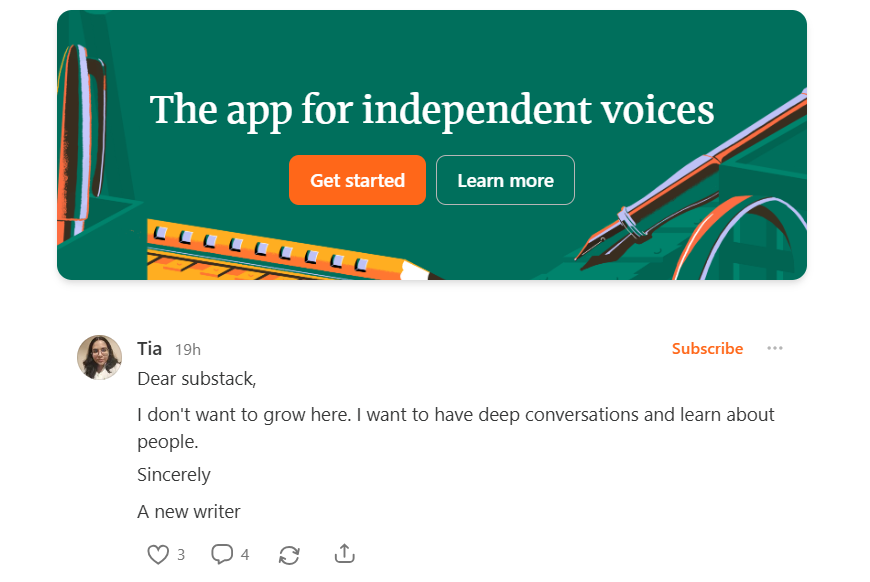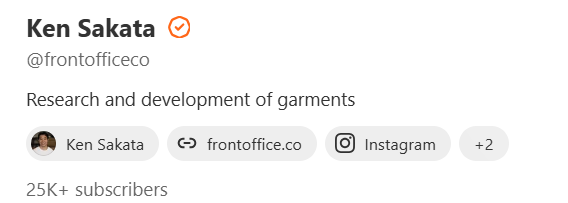
From LinkedIn to Substack: Choosing Intimacy Over Virality
The online professional world has always had its “default hangouts.” LinkedIn became the de facto digital conference hall, a mix of résumés, industry chatter, and thought-leadership one-liners.
But recently, a quieter, more intimate platform has been making noise very differently. Once a scrappy newsletter startup, Substack has grown into a powerhouse where experts, leaders, and professionals ditch the noise of viral chases and instead build meaningful, loyal communities.
For professionals burned out on LinkedIn’s scroll-and-like culture, Substack feels refreshing. It’s less about flexing and more about depth. Let’s dive deep to understand what makes Substack attractive to leaders and experts.
The quiet comeback of Substack
Substack launched in 2017 with a radical idea: give writers the tools to own their audience through email and let them monetize directly through subscriptions. No banner ads, no middlemen, no editors breathing down your neck. Just words, readers, and the option to pay.
Fast-forward to today, and the experiment has worked. Substack now counts over 35 million total subscriptions, with over 5 million being paid. That growth has been explosive, considering just a few years ago paid subscriptions hovered around the one-million mark. For context, the platform’s top 10 creators earn over $40 million annually. Big-name journalists leaving The New York Times or The Atlantic for Substack used to sound like professional exile. Now it looks like an upgrade.
It’s not just journalists anymore. Economists, climate experts, investors, startup coaches, and even comedians are turning their Substacks into mini-media empires. For many, it’s not about getting a million readers. It’s about getting a thousand readers who care enough to read.
Control, community, and cash
LinkedIn offers reach, yes, but it comes with strings attached. Posts live and die by the whims of an algorithm built for virality, not nuance. Substack, by contrast, feels like you’re speaking directly into your reader’s inbox. No distractions, no sidebar noise. No “people you may know.”

Professionals who once poured effort into posts that disappeared in a sea of updates now find that Substack lets them nurture an audience in a way that feels owned. When you hit “publish” on Substack, you know who you’re talking to because you own the subscriber list. That’s a massive psychological shift from speaking into LinkedIn’s algorithmic void.
And then there’s money. Substack’s model is clean: free or paid tiers, often $5 to $10 a month. Unlike LinkedIn, where your words indirectly drive brand deals or networking, Substack pays you directly if your words matter.
That’s why niche experts—AI researchers, financial analysts, policy wonks—choose Substack. They can share premium insights with subscribers while keeping casual readers engaged with free posts.
Engagement that feels real
LinkedIn comments often read like a networking exercise: “Great point!” “Thanks for sharing!” The professional equivalent of nodding politely in a hallway. Substack’s comment sections, though smaller, are where readers invest time.
People write essays in response to posts. Readers argue, agree, and collaborate. It’s not about chasing likes but about building conversations.
Substack’s analytics also reinforce that intimacy. You don’t just see “views” or “impressions.” Users see open rates, subscriber growth, and retention curves.

You can measure how sticky your writing really is. Compare that with LinkedIn’s vague statement, “this post reached 12,000 people.”
Twelve thousand what? Eyeballs? Accidental scroll-bys? Substack’s data feels honest in a way LinkedIn’s can’t.
And the difference shows in relationships. Readers often email creators directly, creating a two-way exchange that LinkedIn rarely produces. For leaders trying to build authority, this kind of engagement is gold.
Scaling is sustainable
One myth about Substack is that you can just pop in and write a few posts, and money will rain down. Reality check: growth is slower, but it compounds. While LinkedIn gives you quick reach through its network effect, Substack demands consistency and patience. But when it clicks, it’s powerful.
Consider The Free Press, Bari Weiss’s Substack publication, which now generates millions annually. Or The Bulwark, a politics newsletter that has turned into a full media operation. These started small but grew because they owned their lists, their voices, and their revenue.
Compare that with the fragility of LinkedIn. Go viral one week, vanish the next. The attention span is fickle, and your posts are only as visible as LinkedIn’s algorithm allows. On Substack, once someone subscribes, they’re in. No algorithm can block your post from hitting their inbox.
Is Substack more exclusive?
But let’s not put Substack on a pedestal. Its biggest strength—paid access—is also its flaw. Not everyone can afford to subscribe to every writer they admire, which creates gated silos of information. The open web is shrinking while walled gardens rise, and Substack plays right into that trend.
That exclusivity can breed echo chambers. If you’re only reading writers you pay for, you’re essentially curating your own intellectual bubble. And if you’re not paying, your access to comments and deeper participation is restricted.
Readers also report fatigue. With every expert starting a Substack, inboxes get cluttered. What started as intimacy can feel like overload. “It’s like Netflix for newsletters,” one reader joked, “but I can’t binge them all.”
LinkedIn has a trump card
Despite Substack’s rise, LinkedIn isn’t disappearing. For professionals without an existing following, LinkedIn remains the easiest place to get discovered. Its organic growth, while declining, is still miles ahead of Substack. The platforms aren’t enemies—they’re complements. Use LinkedIn to draw the crowd, then invite them to Substack for the afterparty.
LinkedIn builds awareness. Substack builds loyalty. Together, they cover both the breadth and depth of professional engagement.
Substack isn’t perfect. Its paywall creates exclusivity. Its rise means inbox saturation. But as far as building real, intimate communities of expertise, it’s giving LinkedIn a serious run for its money. And for professionals tired of chasing algorithms, that’s reason enough to double down on intimacy over virality.
Cut to the chase
LinkedIn is the town square. Substack is the salon. Both matters serve different purposes. Professionals who care about legacy, impact, and depth are turning to Substack not to replace LinkedIn, but to balance it.


